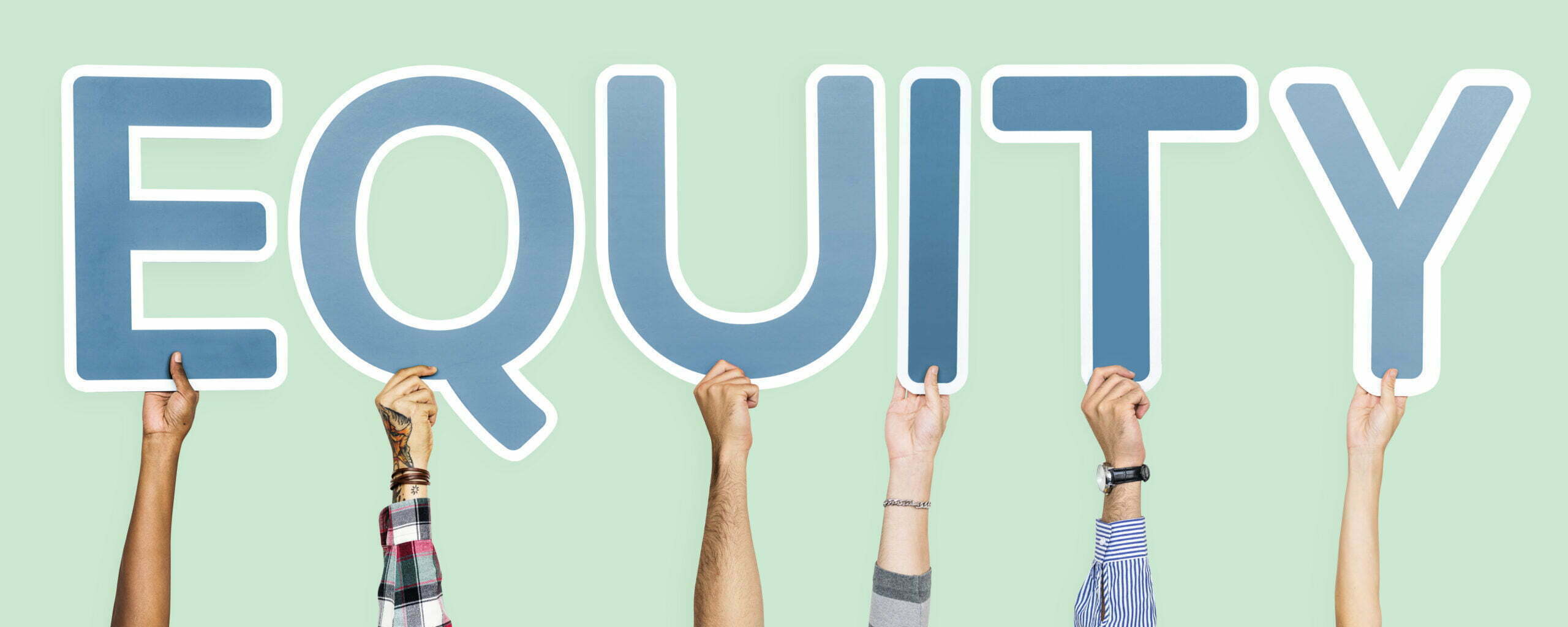In the realm of financial flexibility and homeownership, a Home Equity Line of Credit (HELOC) stands as a powerful tool. With the ability to access your home’s equity, this article will guide you through the intricacies of HELOCs, from their basics to calculating borrowing limits, understanding pros and cons, and even the application process. If you’re considering a HELOC to fund a project, pay for education, or manage ongoing expenses, you’ve come to the right place.
Quick Overview of HELOCs

A Home Equity Line of Credit (HELOC) is a versatile financial tool that allows homeowners to tap into the equity they have built in their homes. Here’s a brief overview:
- Access to Home Equity: HELOCs enable you to borrow money against the value of your home. Your property serves as collateral, making it a secured form of credit.
- Flexible Borrowing: Unlike traditional loans, a HELOC provides a revolving line of credit, similar to a credit card. You can borrow, repay, and borrow again during a specified draw period.
- Draw and Repayment Phases: The typical HELOC has a draw period (usually ten years) where you can access funds and make interest-only payments. After this, you enter the repayment phase (usually 10-20 years), focusing on repaying the borrowed amount.
- Determining Borrowing Limit: The amount you can borrow is based on your home’s equity, usually up to 85-90% of the combined Loan-to-Value (LTV) ratio.
- Interest Rates: HELOCs often have variable interest rates, which can affect your monthly payments. Fixed-rate HELOCs are also available.
- Common Uses: People use HELOCs for various purposes, including home improvements, paying off high-interest debt, education expenses, and emergency costs.
- Responsibility is Key: A HELOC is secured by your home, so responsible financial planning is crucial to avoid the risk of foreclosure. It’s essential to have a clear purpose for the funds and to make timely repayments.
HELOCs have become increasingly popular due to their affordability and flexibility, but they require careful consideration and financial prudence. Consulting a financial expert is advisable when contemplating a HELOC to ensure it aligns with your financial goals and needs.
Demystifying HELOC: What is It and How Does It Work?
A HELOC is a dynamic form of credit, akin to a credit card, offering the freedom to borrow and repay funds as needed during a specified timeframe. Your home secures this line of credit, making timely repayments crucial to avoid foreclosure.
During the draw period, you can tap into the HELOC using checks or a draw card. Monthly interest payments are required on the borrowed amount, but as you pay it back, the funds are replenished. Typically, this draw period spans ten years. Subsequently, you enter the repayment phase, where access to funds ceases, and you focus on repaying the principal and outstanding interest, usually over 10 to 20 years.
Calculating Your HELOC Borrowing Limit
Lenders determine your HELOC borrowing limit based on your home’s equity, expressed as a Loan-to-Value (LTV) ratio. This ratio represents the percentage of your home’s value you can borrow. It’s calculated by dividing your mortgage balance by your home’s appraised value. For instance, if your home is appraised at $375,000 with an outstanding mortgage balance of $150,000, your LTV is 40%, and your total equity is 60%.
Generally, you can borrow up to 85-90% of your combined LTV. To calculate your maximum HELOC balance, use this equation:
(Home’s value x percentage of equity) – mortgage balance = maximum HELOC balance
READ ALSO: Understanding Fixed-Rate HELOCs: Your Comprehensive Guide
Pros and Cons of HELOCs
Understanding the advantages and disadvantages of HELOCs is vital:
Pros:
Flexibility: You’re not obligated to use the entire HELOC amount, making it suitable for ongoing expenses or unforeseen emergencies.
Interest-only Payments: During the draw period, you only pay interest on the amount used, preserving cash for other needs.
Lower Rates: HELOCs, backed by home equity, offer lower rates than unsecured debt instruments, such as credit cards.
Potential Tax Deduction: If used for home improvements, the interest may be tax-deductible.
Cons:
Variable Rates: HELOCs have variable interest rates, which can lead to unpredictable monthly payments.
Secured by Your Home: Defaulting on payments could result in foreclosure.
Repayment Shock: Monthly payments may increase significantly during the repayment phase.
Sensitivity to Real Estate Market: A decline in home values could reduce or freeze your credit line during the draw period.
The Popularity of HELOCs
HELOCs have gained momentum due to rising interest rates, particularly in the mortgage sector. The appeal of HELOCs and home equity loans is driven by their relative affordability compared to other forms of debt, like credit cards. Additionally, the surge in home values has led to increased home equity, making HELOCs a more attractive financing option.
When to Consider a HELOC
HELOCs are advantageous if you have a clear purpose for the funds, such as:
- Paying off High-Interest Debt
- Home Improvements (with the potential for a tax deduction)
- Education Expenses
- Emergency Costs (e.g., car repairs, medical bills)
Remember that your home serves as collateral, so prudent financial planning is essential before taking out a HELOC.
Qualifying for a HELOC

Qualifying for a HELOC involves several key criteria:
- Home Equity: Typically, you need 15-20% equity in your home.
- Credit Score: A mid-600s score is usually required, with lower scores resulting in higher interest rates.
- Debt-to-Income Ratio: Many lenders prefer a DTI ratio of 43% or less, though exceptions may exist.
The HELOC Application Process
Applying for a HELOC resembles a traditional mortgage application and includes the following steps:
- Review and Strengthen Your Credit: Aim for a strong credit score, ideally in the 700s, by making timely payments, resolving outstanding balances, and correcting errors on your credit report.
- Find a HELOC Lender: Shop around and compare offers, paying attention to interest rates and additional fees.
- Apply for the HELOC: You can apply in person, by mail, phone, or online, providing extensive documentation, including residence history, income, and employment information.
- Wait for Approval: Lenders may provide pre-approval within days or require a lengthier underwriting process. An appraisal of your home will determine available equity.
- Close on the Loan: After final approval, you’ll arrange a closing date and receive the HELOC funds typically four days after closing.
HELOCs entail various fees, including application fees, annual maintenance fees, and potential early closure fees.
Understanding HELOC Interest Rates
HELOCs usually feature variable interest rates, determined partly by benchmark indexes like the U.S. prime rate. This means your rate can fluctuate with market conditions, potentially affecting your monthly payments. Fixed-rate HELOCs are available as well, allowing you to lock in a specific interest rate for a portion of your balance.
Monthly Payments on a $50,000 HELOC
Suppose you’ve taken out a $50,000 HELOC and drawn the full amount. To pay it off, you can make consistent monthly payments. Here’s an estimate based on a 7.62% APR and an annual fee of $35:
- $144 per month for 5 years
- $138 per month for 6 years
- $134 per month for 7 years
- $131 per month for 8 years
- $129 per month for 9 years
- $127 per month for 10 years
READ ALSO: National Funding Small Business Loans: Your Ultimate Guide in 2023
HELOC vs. Other Equity Loan Options
A HELOC is not your only choice for accessing home equity. You can also consider:
HELOCs vs. Home Equity Loans:
While a HELOC offers flexibility, home equity loans provide a lump sum with a fixed interest rate and repayment schedule.
HELOCs vs. Cash-Out Refinance:
A cash-out refinance involves replacing your current mortgage with a larger one to access equity.
Conclusion
In this comprehensive guide, we’ve delved into the world of Home Equity Lines of Credit (HELOCs), demystifying their functionality and providing insights into their advantages and disadvantages. HELOCs offer an incredible level of financial flexibility, allowing you to access the equity in your home for various purposes.
Before venturing into a HELOC, remember that your home serves as collateral, making responsible financial planning crucial. Consider your needs, financial goals, and the potential impact on your credit score. Shop around for competitive rates and fees when choosing a lender, and ensure you have a clear purpose for the funds.
HELOCs have grown in popularity due to their relative affordability compared to other forms of debt, and they can be an excellent option for homeowners with equity. However, like any financial tool, it should be used wisely and with careful consideration.
If you’re considering a HELOC, consult with a financial expert to assess your unique situation and make an informed decision. With proper planning and responsible use, a HELOC can unlock the financial potential of your home.
Don’t forget to stay informed about current interest rates and market conditions, and always make sure to read and understand the terms and conditions of any HELOC agreement thoroughly. Your financial well-being depends on making informed choices and using these financial tools wisely.
HELOC FAQs
Is it better to get a HELOC or a home equity loan?
The choice depends on your purpose and financial needs. A HELOC is ideal for those who want a source of funds accessible on an as-needed basis. On the other hand, a home equity loan is suitable for a one-time expense, as you’re responsible for interest on the entire loan balance.
How does a HELOC affect your credit score?
Applying for a HELOC involves a hard credit check, causing a temporary credit score dip. Proper use and repayment can impact your score positively.
What is the typical length of a HELOC?
HELOC draw periods are often ten years, with repayment periods lasting up to 30 years. Some lenders may offer shorter terms or the option to renew or refinance once the repayment term ends.
What are the typical interest rate ranges for HELOCs?
Interest rates for HELOCs can vary, but they often align with market conditions. Typically, you might encounter rates ranging from 3% to 7%. However, these rates can change over time, so it’s essential to keep an eye on current financial trends.
Can I use a HELOC to purchase a new home?
HELOCs are primarily designed to access the equity in your existing home. While some people use them for a down payment on a new home, it’s not their primary purpose. You may want to explore mortgage options or consult with a financial advisor for home purchase financing.
In other related article, How Does a HELOC Impact Your Credit Score?




